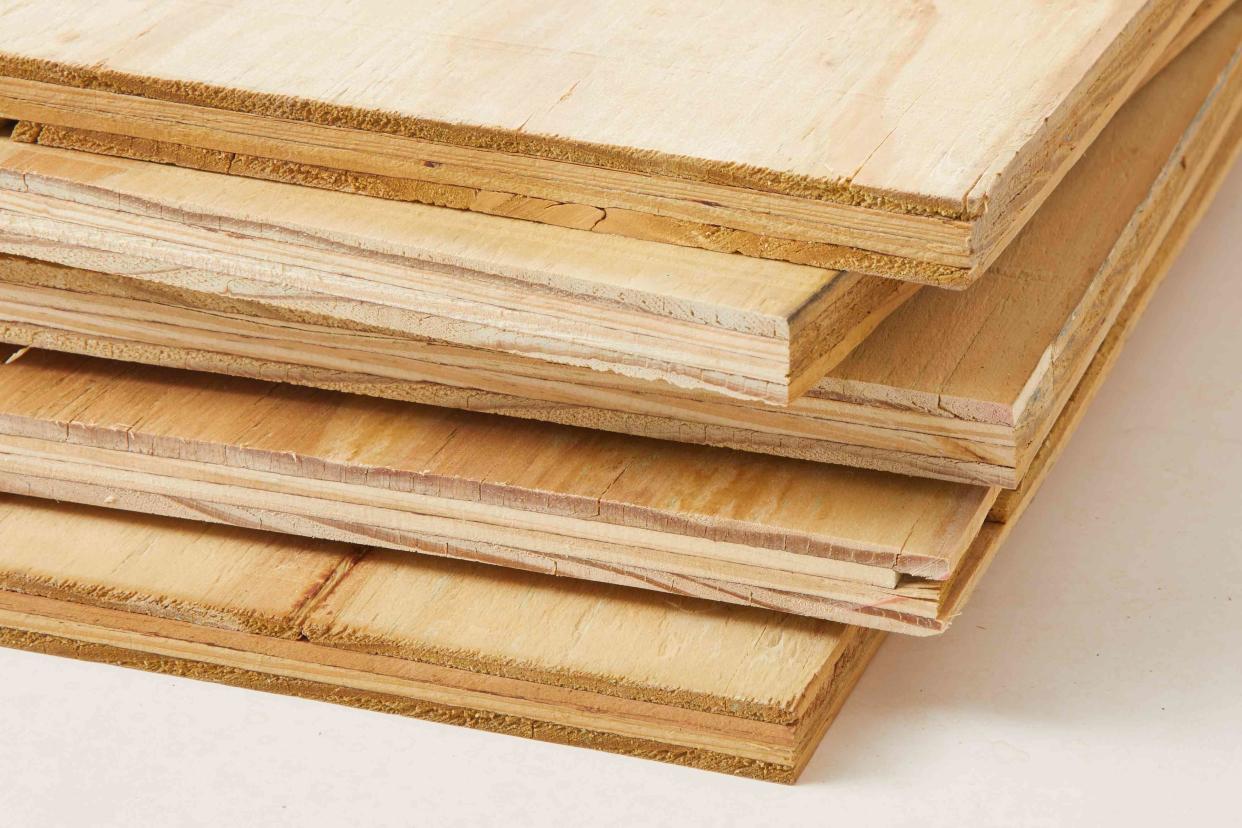What Is Marine-Grade Plywood?

The Spruce / Jacob Fox
Reviewed by Johnathan BrewerFact checked by Sarah Scott
Marine-grade plywood is a high-quality hardwood plywood made with waterproof glue. Though marine-grade plywood is not waterproof wood, it is water resistant, lightweight, strong, and virtually free of defects.
Because of its many layers of high-quality wood, marine-grade plywood can last 15 to 25 years if well maintained.
These qualities make marine-grade plywood a popular choice for exterior building projects like outdoor furniture, especially in coastal areas. Marine-grade plywood gains even more durability after it receives a strong protective finish.
Learn about marine-grade plywood, how it's different from standard plywood, and where you can use it.
Marine-Grade Plywood vs. Standard Plywood
Marine-grade plywood consists of five layers, or plies, of high-quality wood adhered with waterproof glue, while regular plywood consists of three layers of wood attached with non-waterproof glue.
Marine-Grade Plywood
Marine plywood is a type of hardwood plywood. Hardwood plywood is made with thin layers of 100-percent hardwood, which is generally stronger, harder, and has a finer grain than softwood.
Thin layers of hardwood veneer—known as plies—are used to make marine-grade plywood. Arranging the sheets in perpendicular layers strengthens the plywood.
Cross-lamination gives marine plywood even more strength. The plies may have knots but no knotholes.
The waterproof glue in marine plywood will not fail, and the wood layers will not delaminate or fall apart if the plywood is exposed to moisture, very high humidity, or boiling temperatures.
Tip
Waterproof glues are critical if you're building a boat hull with plywood. The plywood will remain structurally intact if the hull's protective finish is damaged and the wood gets wet.
Standard Plywood
Standard plywood is made with fewer, thicker layers than marine-grade plywood and mainly contains softwood, like pine or Douglas fir.
The interior layers also have voids, or holes, that you can't see until you cut into the plywood panel.
Standard plywood contains fewer thicker layers of wood than marine-grade plywood. More thin plies result in a denser panel with edges that cut and sand cleaner.
Even though most plywood products are graded A, B, C, and D (with A being the best), they aren't considered as high quality as marine and other hardwood plywood.
Types of Marine-Grade Plywood
Marine plywood is available in the following grades:
A-A: This high grade of marine-grade plywood is available in 1/2-inch-thick panels.
A-B: This marine-grade plywood grade is the same as A-A grade, except that the panels are 3/4-inch thick, not 1/2-inch thick.
B-B: Often called face-back plywood, this grade of marine plywood is rated "B" on both sides of the panel.
HDO: High-density overlay (HDO) grade plywood is made with more resins.
Pros and Cons Of Marine-Grade Plywood
Pros
Durable up to 20 years
Water-resistant
Attractive surface
Resists termites and ants
Cons
Expensive
Harder to cut
Contains chemicals
Difficult to obtain
How to Protect Marine-Grade Plywood
If marine plywood is exposed to moisture, it must be protected by an excellent water-resistant finish.
To protect marine plywood, use a clear penetrating epoxy. This type of sealant takes more time to apply than a polyurethane sealer but requires less maintenance in the long term.
History of Marine Plywood
Waterproof adhesive was invented in 1934, making plywood possible. It was used to build boats and barracks during WWII, and homes and cities in postwar America. By 1954, the industry grew to more than 100 mills and production approached 4 billion square feet.
Do You Need Marine-Grade Plywood?
Any boat or nautical structure should be built with sealed marine-grade plywood. Along with nautical uses, marine plywood is used for other moisture-impacted projects like:
Garden furniture: tables, chairs, and benches
Arbors
Planters
Wood accents in bathrooms
Marine plywood must be finished with a sealant to protect it from moisture damage.
Frequently Asked Questions
Is marine plywood worth the money?
Marine plywood is worth the money if you need it for nautical applications as it is less prone to delamination than standard plywood.
Which is better, marine plywood or treated plywood?
If you need a material that can withstand moisture without a protective finish, choose pressure-treated lumber or plywood rated for the expected level of exposure. Wood species that naturally resist decay, like redwood, cedar, ipe, shorea, and cypress, are less likely to rot due to molds and other organisms that feed on the wood. Marine plywood is not pressure-treated to resist decay, like pressure-treated lumber and plywood.
What is the cheapest way to waterproof plywood?
The cheapest way to waterproof plywood is with an exterior-grade polyurethane coating or with exterior-grade acrylic-latex paint.
Read the original article on The Spruce.

